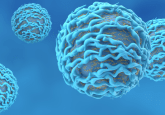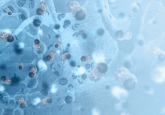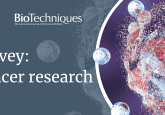Diamond quantum sensors improve spatial resolution of MRI

Researchers developed a quantum sensor that, when used with nuclear magnetic resonance (NMR), has potential to enable the capture of microstructures in living cells.
A collaboration of researchers across institutes in Germany, led by the Technical University of Munich (Germany), has developed diamond quantum sensors that can be used to improve the resolution of NMR imaging. This technology could be used to directly detect the mobility of atoms and capture microstructures in living cells.
NMR is used to visualize tissue and structures without damaging samples and is used in the medical field in MRI, a useful non-invasive and non-destructive diagnostic tool to image soft tissues. MRI can differentiate between tissue types, meaning organs, joints, muscles and blood vessels can be imaged and identified. To do so, a strong magnetic field is applied to the sample, which interacts with the small magnetic fields produced by hydrogen nuclei. The hydrogen nuclei realign at different speeds in different tissues and produce a signal, which is picked up by a sensor.
“Existing NMR methods provide good results, for example when it comes to recognizing abnormal processes in cell colonies. But we need new approaches if we want to explain what happens in the microstructures within the single cells,” commented Dominik Bucher, senior author of the study.
 AFM could be used for early cancer diagnosis
AFM could be used for early cancer diagnosis
A standardized procedure to measure the mechanical properties of cells with atomic force microscopy (AFM) could lead to a novel method for early cancer diagnosis.
To address this limitation, the team produced a quantum sensor made of synthetic diamond. During the growth of the diamond, they enriched the diamond layer with nitrogen and carbon atoms. Then, electron irradiation caused individual carbon atoms to detach from the diamond’s perfect crystal lattice.
The resulting defects arranged themselves next to the nitrogen atoms, creating a nitrogen-vacancy center, which has quantum mechanical properties important for sensing. “Our processing of the material optimizes the quantum states, which allows the sensors to measure for longer,” explained co-author Peter Knittel.
To test the quantum sensor and their nitrogen-vacancy center-based NMR (NV-NMR) spectroscopy technique, the researchers simulated the microstructure of a cell with a microchip containing microscopic water-filled channels. This was placed on the diamond quantum sensor, which enabled analysis of the diffusion of water molecules within the microstructure.
The researchers will continue to develop this method further to investigate microstructures in single living cells or tissue sections, which could give details of how tumors begin to develop. “The ability of NMR and MRI techniques to directly detect the mobility of atoms and molecules makes them absolutely unique compared to other imaging methods,” concluded Maxim Zaitsev, a co-author of the study. “We now have found a way, how their spatial resolution, which is currently often deemed insufficient, can be significantly improved in future.”





